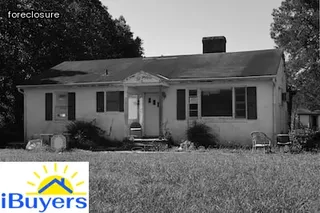When facing foreclosure in the state of Ohio, it is important to understand the timeline and laws associated with the process. Foreclosure begins when a homeowner defaults on their loan payments by being more than 30 days late.
At this point, the lender can file a complaint with the court and start legal proceedings to repossess the home. The borrower then has 28 days to respond to the complaint or they will be declared in default.
Once this happens, the court will order a sale of the property through either public auction or private sale at fair market value. If no third party bids on the property at auction, then it will be sold back to the lender.
After that, if there is still an outstanding balance due from the original loan, then it can be pursued through civil action or collection efforts. In Ohio, borrowers have certain rights throughout this entire process such as redemption rights and other options for avoiding foreclosure altogether.
It's important for homeowners to familiarize themselves with these rights and timelines in order to minimize potential losses during foreclosure proceedings.

Preforeclosure is the stage in the Ohio foreclosure timeline when a homeowner has defaulted on their mortgage payments and the lender begins taking steps to repossess the home. Before the lender can begin foreclosure proceedings, they must first give notice of default to the borrower and provide them with an opportunity to reinstate their loan by paying off any back payments and penalties.
The notice of default will also indicate the amount of time that a homeowner has to pay off their debt before foreclosure proceedings can begin. During this preforeclosure period, homeowners may be able to work out an alternative arrangement with their lender or find another solution such as selling their home.
It's important for homeowners to act quickly during preforeclosure if they want to avoid further damage to their credit or loss of their property.
When homeowners find themselves unable to keep up with their mortgage payments, they may face foreclosure. In the state of Ohio, there is a certain timeline and set of laws that govern how foreclosures proceed.
The first step in the process is for the homeowner to receive a Notice of Default from their lender. This document states that they are in default on their loan and provides them with information about their options moving forward.
From this point, the homeowner has 28 days to pay off their debt or enter into a repayment agreement with their lender. If they do not take action within this time frame, the lender will move on to filing a Notice of Sale with the courts.
This document declares that the property is being put up for auction and sets forth a date for when it will occur. Before this auction can happen though, the homeowner has 14 days to redeem their loan by paying off any past due amounts plus interest and fees.
If they fail to do so, then the property will be sold at auction to the highest bidder who will assume all rights to it.

Homeowners in Ohio who are facing foreclosure have rights and protections under Ohio state law. The foreclosure process in the state is regulated by the Ohio Revised Code, which establishes timelines for the foreclosure process, as well as certain rights for borrowers.
Foreclosure in Ohio must begin with a legal filing by the lender or mortgage servicer, called an Entry of Appearance and Demand for Sale. This document provides homeowners with notice that their loan is in default and that foreclosure proceedings have begun.
During this stage, homeowners can look into different options to avoid foreclosure, such as loan modification or refinancing. Homeowners also have a right to redeem their home even after it has been sold at auction by paying off all past due amounts plus costs.
Additionally, lenders are prohibited from taking possession of the home until after sale confirmation is issued by the court. Knowing these different rights during the foreclosure process can help homeowners protect their interests and make informed decisions throughout the process.
Stopping a foreclosure in Ohio can be a daunting task, but with the right knowledge and resources, it is possible. Knowing the timeline for the foreclosure process and understanding the laws can help homeowners take proactive steps to prevent being foreclosed upon.
It's important to act quickly if you're behind on your mortgage payments - contact your lender as soon as possible to discuss your options. In some cases, they may be willing to work out a repayment plan or loan modification that can help you stay in your home.
The Ohio Department of Commerce offers counseling services for those who are trying to avoid foreclosure, and they can also provide information on other programs and resources available in the state. You should also consider talking with an experienced attorney who specializes in foreclosure defense and bankruptcy law.
They will be able to explain the legal aspects of stopping a foreclosure in Ohio and advise you on how best to proceed.

When a homeowner is facing foreclosure, bankruptcy may be an option to help delay or prevent the process. It is important to understand how different types of bankruptcy can impact the timeline and laws regarding foreclosure in Ohio.
Chapter 7 bankruptcy will discharge any debts owed and stop foreclosure proceedings. However, filing for Chapter 7 does not allow homeowners to keep their home, so it should only be used as a last resort.
On the other hand, Chapter 13 bankruptcy provides a way for homeowners to keep their homes by reorganizing their debt into more manageable payments. This type of bankruptcy also stops foreclosure proceedings while allowing homeowners to catch up on missed payments over 3-5 years.
In addition, Ohio has additional legal protections that can help homeowners stay in their homes during foreclosure proceedings such as forbearance agreements, loan modifications and repayment plans negotiated with lenders. Homeowners who are facing foreclosure should consider all of these options and consult with an attorney or housing counselor before making any decisions about how best to proceed.
In Ohio, a deficiency judgment is an amount of money that the court may require a homeowner to pay if the proceeds from their foreclosure sale are less than what they owe. This means that even after a foreclosure is completed and the home is sold, the homeowner could still be liable for any remaining balance on their mortgage.
There are some restrictions in place that limit when a creditor can receive a deficiency judgment in Ohio. These include the fact that creditors must receive permission from the court before taking legal action against homeowners.
Additionally, under state law, creditors have only one year from the date of foreclosure to file an action for a deficiency judgment against homeowners. When courts do grant permission for creditors to pursue deficiency judgments, there are limits on how much money homeowners can be forced to pay back.
The amount of money owed cannot exceed twice the actual market value of the foreclosed property at the time of sale or it cannot exceed what was actually owed on the mortgage at the time of foreclosure. Understanding these laws and timelines can help Ohio homeowners protect themselves during foreclosure proceedings.

The foreclosure process in Ohio generally takes between two to three months. Homeowners facing foreclosure should become familiar with the timeline and laws that govern it as soon as possible.
The first step is a notice of default, which is sent when a homeowner fails to make their mortgage payments on time. This must be followed by a thirty-day notice of intent to foreclose, after which the lender can file a foreclosure complaint in court.
From there, an auction date will be set and advertised for at least four weeks prior. At the auction, if no one bids or the bid is below what is owed on the home, then the lender will retain ownership of it.
Homeowners have sixty days following this auction to redeem their property by repaying what they owe plus interest and costs associated with the foreclosure process. It’s important to note that every situation is unique and homeowners should contact an attorney for specific guidance regarding their case.
Homeowners facing foreclosure in Ohio are often overwhelmed by the timeline, laws and processes surrounding this issue. It is important to understand what your rights are as a homeowner in order to protect yourself and avoid the sale of your home.
One proactive measure homeowners can take is to make sure they stay informed about their rights and the foreclosure process. This means understanding when notices must be sent and responded to, how much time you have before the sale of your home, what documents are needed for each step, and other pertinent information.
There are also different programs available that may help you keep your home if you qualify. Additionally, it's essential to research all the options available for resolution like loan modifications or repayment plans with your lender before any sale takes place.
By taking these steps, homeowners can work towards avoiding the sale of their home through proactive measures such as staying informed and researching their options.

Working with an attorney during a foreclosure can be beneficial to homeowners in Ohio in many ways. A qualified attorney will have deep knowledge of the Ohio foreclosure timeline and laws and be able to provide counsel on any legal matters that may arise during the process.
An experienced lawyer will be able to negotiate on behalf of the homeowner, ensuring their best interests are represented in court proceedings. Additionally, they can work to find solutions that keep people in their homes while they face financial struggles or help them transition out of their home as quickly and efficiently as possible.
Attorneys also have expertise in helping homeowners review, understand, and act upon documents associated with foreclosure proceedings. Utilizing an attorney's services during this difficult time is invaluable for anyone facing foreclosure in Ohio and could make all the difference for families trying to save their homes or navigating a successful sale.
If you are facing foreclosure in Ohio, it is important to be aware of the timeline and laws governing the process. There are a variety of resources available to help homeowners understand their rights during the foreclosure process and to help them find assistance.
For example, legal aid organizations in Ohio can provide information about the state’s foreclosure laws. Homeowners facing foreclosure may also be eligible for free or low-cost legal services from qualified attorneys.
Additionally, housing counselors are available to offer advice and assistance on topics such as mortgage repayment plans, budgeting and credit counseling. Several local organizations, such as United Way and Catholic Charities, have programs specifically designed to assist families who are struggling with financial issues related to their homes.
Homeowners should also check with their lenders or mortgage servicers; some servicers have programs that allow homeowners to modify or refinance their mortgages in order to avoid foreclosure. Finally, there are numerous online forums and websites dedicated to helping those dealing with foreclosure in Ohio by providing information on resources and support.

When it comes to understanding Ohio's foreclosure timeline and laws for homeowners, the decision to move out of a home during the foreclosure process can be complicated. On one hand, staying in the home until it is foreclosed on can provide benefits such as being able to keep any equity that has been built up in the home, providing a sense of stability during an otherwise difficult time, and allowing tenants to protect their credit score by avoiding eviction.
On the other hand, moving out of a home facing foreclosure may mean reducing the overall financial burden by not having to pay rent or utilities for a residence that is no longer owned. Additionally, relocating may give homeowners access to new job opportunities or lower cost housing options.
Ultimately, whether a homeowner chooses to stay or go during foreclosure depends on individual circumstances and resources available.
In Ohio, the foreclosure process begins when a homeowner defaults on his or her mortgage. Once default is declared, the lender has the right to file for foreclosure and begin a legal action in court.
The foreclosure process typically begins with a notice of foreclosure filed by the lender, which notifies the borrower that they are in default and must take action to avoid foreclosure. The homeowner then has 28 days to respond to the notice of foreclosure.
If they do not respond within this time frame, they may be subject to an expedited foreclosure process, which can take as little as 30 days from start to finish. During this period, the lender will contact the homeowner multiple times in order to work out an agreement that would allow them to remain in their home.
If no such agreement is reached, then a public auction of the property will occur and be sold off to the highest bidder. After the sale is completed and finalized, any remaining balances owed by the homeowner must be paid off within 90 days or else face eviction from their home.
It is important for homeowners facing potential foreclosure to understand their rights and options so that they can avoid unnecessary legal fees or eviction proceedings.

In Ohio, homeowners typically have 28 days to move out of their property after a foreclosure. The timeline for foreclosure in the state varies, as it can take anywhere from two weeks to over two months for the process to be completed.
The exact length of time depends on the county in which the home is located and additional regulations imposed by local courts. Homeowners should also be aware that if they fail to move out within the specified timeframe, they may face financial penalties and even eviction proceedings.
It is important to understand this timeline so that homeowners can plan accordingly and avoid any further legal consequences.
After a foreclosure in Ohio, the homeowner will no longer have any interest in the property. The lender or other entity that foreclosed on the home will become its new owner and may choose to sell it.
If the home is sold, any outstanding debt owed to the lender or other entity must be paid off with proceeds from the sale. Additionally, any remaining money goes to the former homeowner, minus applicable taxes and fees.
In some cases, if there is equity in the home after all debts are paid off, this money may also go to the former homeowner. After a foreclosure in Ohio, homeowners should consult with a qualified attorney to understand their rights and obligations regarding taxes and other financial obligations associated with their former home.
In Ohio, homeowners are considered to be in foreclosure when they are at least four months behind in mortgage payments. Once a homeowner has defaulted on the loan, the lender must follow certain procedures and timelines that are outlined by state law.
In Ohio, the foreclosure process typically begins with the lender sending a notice of default to the borrower after four months of missed payments. This notice informs the homeowner that if they fail to cure the delinquency, their property may be foreclosed upon.
Next, the lender will file a Complaint for Foreclosure with the court and serve it on the homeowner; at this point, an auction date is set and announced. After five more months have elapsed without payment from the homeowner, an Order of Sale is issued by a court and published in a local newspaper for several weeks.
Finally, an auction takes place where another party can purchase the home unless prior arrangements have been made between borrower and lender. Homeowners should understand that understanding Ohio's foreclosure timeline and laws is essential when facing potential foreclosure proceedings.